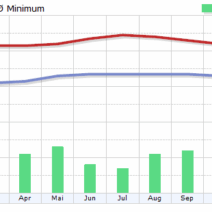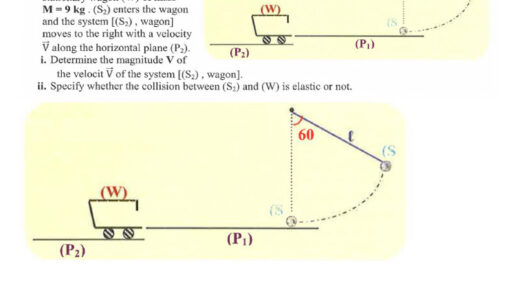Football, a sport revered around the globe, brings people together in pursuit of a common objective—victory. However, the environmental implications of this cherished pastime demand attention, particularly in the realm of energy conservation. Players, coaches, and fans alike can adopt strategies to conserve energy while engaging in football. This guide delineates various methods, encompassing training exercises, facility management, and match-day practices, to ensure that victory does not come at the expense of our planet.
1. Sustainable Training Practices
Training is foundational for any football team, but that does not mean it should be wasteful. Coaches can implement practices that are both effective and energy-efficient:
- Utilizing Natural Light: Choose daytime for training sessions to leverage natural sunlight. Outdoor fields often have ample daylight, reducing reliance on artificial lighting.
- Efficient Use of Equipment: Encourage minimal usage of high-energy consuming equipment such as electric timing systems and electronically managed training tools. Opt for hand-operated alternatives whenever possible.
- Eco-friendly Transportation: Promote carpools for team travel to training sessions. Group commuting can significantly reduce the carbon footprint associated with individual travel.
2. Eco-conscious Match Preparation
As match day approaches, it is crucial to focus on energy-saving strategies in preparation:
- Field Maintenance: Systems that automate irrigation based on weather patterns can conserve water and energy. Regular maintenance ensures optimal playing conditions while minimizing energy use.
- Rainwater Harvesting: Install systems to collect rainwater for irrigation and cleaning purposes. This not only conserves energy but also reduces the demand on municipal water systems.
- Inventory Management: Maintain an organized equipment inventory to avoid over-purchasing and waste. This includes uniforms, balls, and training gear, which should be reused or recycled whenever feasible.
3. Energy-efficient Venue Operations
Stadiums and practice facilities can significantly lower their energy consumption with diligent planning:
- LED Lighting: Employ LED fixtures to brighten stadiums and training grounds. These bulbs significantly reduce electricity consumption compared to traditional lighting.
- Smart Temperature Controls: Install programmable thermostats in locker rooms to adjust heating and cooling based on occupancy, ensuring energy use is minimized when spaces are dormant.
- Renewable Energy Sources: Transition to solar panels or wind turbines to power training facilities and stadiums. Such investments, while initially costly, lead to long-term savings and reduced carbon emissions.
4. Fan and Community Engagement
The role of fans extends beyond just support; they can be part of the solution:
- Aware Spectators: Encourage fans to carpool, cycle, or use public transport to matches. The collective action of reduced vehicle use can have a profound environmental impact.
- Sustainable Merchandise: Promote merchandise made from sustainable materials. Fans purchasing eco-friendly apparel helps set a standard within the sporting community.
- Incorporation of Green Themes in Events: During match days, organize initiatives that promote sustainability, such as recycling stations and educational booths on environmental issues.
5. Community Programs and Outreach
Football clubs can enhance their impact through outreach and community involvement:
- Youth Engagement: Implement programs in schools to educate young football players about energy conservation and environmentally friendly practices.
- Workshops and Clinics: Host events focused on sustainable practices in sports, inviting experts to share knowledge on energy efficiency in athletic settings.
- Partnerships with Environmental Organizations: Collaborate with non-profits working on environmental initiatives to bolster community sustainability efforts while promoting the sport.
6. Game-Day Energy Conservation
On the day of competition, energy conservation can still be part of the overarching plan:
- Concessions Management: Offer food and beverages that are locally sourced and served in eco-friendly packaging. This not only reduces energy from transportation but also diminishes waste.
- Digitization: Replace paper tickets and programs with digital formats. This reduces paper waste and streamlines the entry process, making it both efficient and eco-friendly.
- Post-Game Cleanup: Organize a team of volunteers equipped with reusable bags and bins to ensure the stadium grounds are cleaned sustainably, minimizing litter and waste.
7. Measuring Impact and Progress
Finally, ongoing evaluation of energy conservation efforts is imperative:
- Data Collection: Monitor energy consumption before and after implementing new strategies to identify areas for improvement. Regular audits can provide insight into cost-saving measures.
- Feedback Mechanisms: Gather input from players, coaching staff, and fans regarding energy-saving measures and their effectiveness. Using feedback to refine strategies fosters a culture of sustainability.
- Set and Review Goals: Establish clear, achievable energy conservation goals and regularly review progress to inspire ongoing commitment from the entire community.
In conclusion, the pursuit of energy conservation in football is a multifaceted endeavor, but it is achievable. Through sustainable training practices, mindful management of facilities, community engagement, and a shared commitment to reduce the environmental impact, the football world can celebrate victories both on and off the field. By winning without wasting power, the sport can exemplify responsible stewardship of our planet, setting a precedent for future generations of athletes and fans alike.








